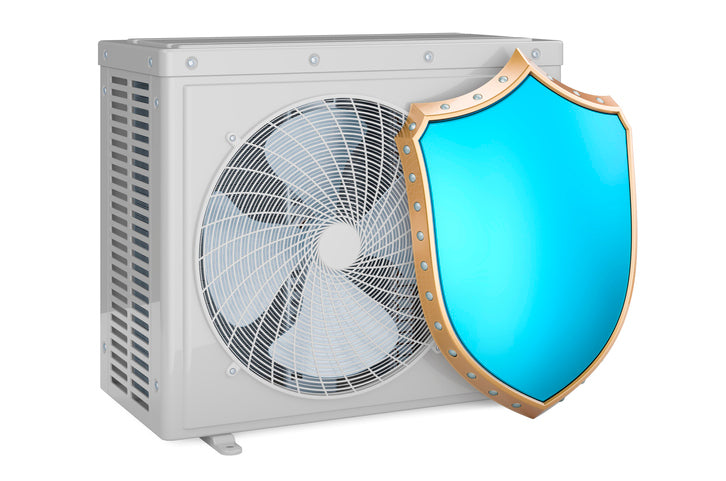How To Improve Air Quality in Homes With Pets

Pets are great because they bring us joy, companionship, protection, and plenty of love and cuddles. Unfortunately, our furry or feathered friends can also affect the air quality in our homes. Fur, dander, saliva, and allergens tracked in from outside can make it harder to keep indoor air clean. Poor air quality can cause breathing difficulties for people with respiratory problems, but it can also cause illness and unpleasant odors for anyone. Fortunately, you don’t have to hand Buddy, Whiskers, or Polly their walking papers. Here’s how to improve air quality in homes with pets.
Pet-Related Air Pollutants: A Breakdown
Before we get into the solutions, it’s important to understand the types of pollutants pets introduce into your home. Here’s a short list:
- Pet dander. Dander is tiny, even invisible flakes of skin shed by cats, dogs, birds, and other animals with fur or feathers.
- Fur and hair. Shed fur and hair may carry dander and other allergens. Some animals, however, have hypoallergenic fur, so don’t always blame the dog or cat!
- Saliva and urine. These dry out and become airborne, adding to the allergen load.
- Dust and dirt. Pets can track in dust, dirt, pollen, and pests from outside.
Like dust, debris, mold, and other irritants, these things can float about the air inside your home, eventually ending up in your nose and lungs. Not a pleasant thought, but there’s no reason to worry. Here’s why!
Benefits of Improving Air Quality
Even when pets aren’t part of the equation, improving your home’s air quality offers several immediate benefits:
- Better health. Fewer allergens and pollutants in the air prevents respiratory issues and allergies.
- Comfort. Cleaner air means a more breathable and therefore comfortable living environment.
- Odor control. What’s that smell? Better air quality helps eliminate pet odors.
- Peace of mind. Clean air can bring you the peace of mind that your home is a healthy environment for both you and your pets.
Steps To Improve Air Quality
Ready to get to work and improve your home’s air quality? Here are a few tips that will literally clear the air.
Regular Cleaning
Keeping your home clean and tidy is the first and most important step toward improving air quality. Vacuum carpets, rugs, and upholstery frequently. Employ a vacuum with a HEPA filter for added effectiveness. Dust surfaces with a microfiber cloth to trap particles rather than just moving them around, and wash the cloth after each use.
Change your bedsheets, and wash and dry rugs and other furnishings frequented by your pet. Don’t forget to wash your pet’s bedding, toys, and other items they interact with. Many pets need help getting clean as well. While some animals clean themselves, like cats, others need regular bathing, like dogs. Brushing and combing your pets’ fur is another sure way to reduce dander. Do it outside if you can, and discard any fur collected on the brush or comb.
Invest in a Quality Air Purifier
Air purifiers with HEPA filters significantly reduce airborne pet dander and fur, among other allergens. Place air purifiers in commonly used rooms, especially those where your pets spend a lot of time. Some air purifiers are equipped with activated carbon filters to eliminate pet odors. If you have pets, think of an air purifier as more of a necessity than a luxury.
Check Your HVAC System
Whether you have a mini split complete kit or a central air system, most modern heating, ventilation, and air condition (HVAC) units provide air purifiers as well as hot and cool air. Such systems, especially those with HEPA filters, screen out dust, dander, and other pollutants beautifully. Change or clean the air filters regularly, and check and replace them every few months, depending on the manufacturer’s recommendations, the upcoming season, and the number of pets in your home. You’d be surprised at how much a good system filters out.
Keep It Ventilated
Proper ventilation is a big help in reducing indoor air pollutants. If the weather allows it, open windows and doors to permit fresh air to circulate. Use exhaust fans in kitchens and bathrooms to remove pollutants and moisture from the air and keep things flowing.
Keep Out!
Your pets may whine and complain if you do this, but sometimes it’s a necessity. Designate pet-free zones in your home, such as bedrooms or home offices, to reduce the concentration of pet-related allergens in those areas. Household members who are more sensitive to allergens may need these getaways for relief when seasonal allergies act up.
Natural Cleaning Products
Returning to the importance of cleaning, many conventional cleaning products contain chemicals that worsen indoor air quality. That goes for you and your pets. Select natural, non-toxic cleaning products that are safe for pets and humans and free from volatile organic compounds (VOCs) and other harmful chemicals. Some things are worse than dander and fur!
Control the Humidity
High humidity levels promote mold growth and dust mites, which can make you and your pets sick and exacerbate existing allergy issues. Use dehumidifiers to maintain optimal humidity levels (around 30 to 50 percent) in your home to prevent mold growth and dust mites, which can contribute to poor air quality. If you and your pets are both sniffling a lot, this could be the reason.
Add Plants
There’s no more natural way to enhance air quality than with plants. Certain plants, such as spider plants, peace lilies, and bamboo palms, are well-known for their air-purifying properties. Plants absorb toxins, release oxygen, reduce allergens, and improve the ambiance of your living space. Just be sure to pick pet-friendly plants! Some cause allergic reactions and even death in some species.
Be an Inspector
Never stop looking investigating poor air quality and resulting health issues. Periodically inspect your home for sources of indoor air pollution. Watch for mold in the bathrooms or basement, promptly addressing any leaks. If you discover pests like rodents or insects, don’t leave their removal to your pets (though your cats will probably be happy to hunt). Instead, hire professional pest control to have these potential allergy contributors discreetly eliminated. Installing an air quality monitoring system is another great idea that will alert you to changes in particulate matter, humidity levels, and other pollutants.
That’s the gist of how to improve air quality in homes with pets. It may require a little work, but your fur babies are worth it! For more tips on maintaining a healthy home environment or a consultation on the best HVAC system for you, contact us today!







